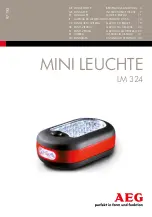
9
3.
Inspect Backstop Fittings
– Visually inspect backstop clamps and support fittings for hairline
cracks, loose bolts and corrosion, replacing defective parts as required. All backstop fittings
should be tightened occasionally to keep backstop rigid. Vibration may cause fittings to loosen
causing undue “rattling” of backstops. To stiffen backstops with cross tension type flats, drive
the bottom clamps downward on pipe to put flats in tension. Check all hinge fittings, tightening
and lubricating hinge bolt as required. Replace worn bolts as required, utilizing the proper
grade bolt and nut type as listed in the Fittings Parts List in this manual. Be certain the back-
stop has not been altered from the “as-built) drawings, and that all chain supports, cross flats,
extension pipes, etc., are still securely in place.
4.
Check Backstop Accessories
– Such as the height adjuster unit (see height adjuster section
in this manual for general maintenance).
5. Inspect Telescoping Diagonal Braces – (Model 220 side fold unit only) Clean inside telescop-
ing brace and lubricate periodically to prevent binding on the side-fold cycle. Binding of the tel-
escoping brace could cause damage to backstop if not properly lubricated. A dry silicon lubri-
cant is recommended on the telescoping brace so as not to collect dirt and dust which cause
binding of the operation.
Note: No.’s 6 through 9 pertain to the 219 Fold-Up unit.
6.
Inspect All Winches
– The winch, either manual or electric, is the most important part to
maintain on a folding-type- basketball backstop.
A. For the manual winches, periodically check the winch every three to four months, lubri-
cating as required. Use Pyroshield No. 5182 Grease (or equal).
Check gears for excessive wear, replacing them if signs of wear are apparent. To properly
check manual winches, the metal cover may be removed. If the teeth of either the bronze
or steel gear show signs of becoming pointed or tapering to a point, they should be re-
placed. Steel or bronze shavings (a sign of improper lubrication) will usually be present if
the teeth have worn this severely. Normally the teeth will appear to be blunt and show
signs of slight wear only on the sides. If this is the case, lubricate the gears with the rec-
ommended open gear lubricant.
B. Electric winches should also be periodically inspected for proper operation of the limit
switch assembly and key switch. Faulty electrical components could create serious
hazards.
The winches should also be inspected for possible hairline cracks in the cable drum. If
cracks are visible, do not use until unit is replaced or repaired. If winch is belt driven, In-
spect the small and large belt drive pulleys, making certain they are properly secured to
each shaft, and rotate concentrically. Also, check anchorage of winch to either the support
pipe or wall; and loose anchorage should be repaired immediately. If the winch is gear
driven, make sure the gear is not showing excessive signs of wear. Note any excessive
noise as well as checking the limits are properly set to ensure complete stop before back-
stop comes within a safe distance of any obstructions. Make sure cable is properly spool-
ing to ensure the limits will properly engage. The cable should evenly wrap the cable drum
until the entire cable drum is wrapped or the limits are reached before the cable wraps on
top of itself.
Summary of Contents for 219 Series
Page 49: ...INSTALLER NOTES...










































